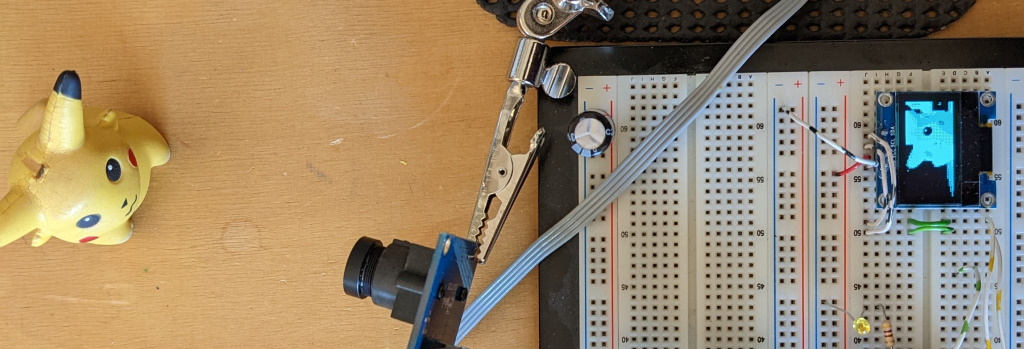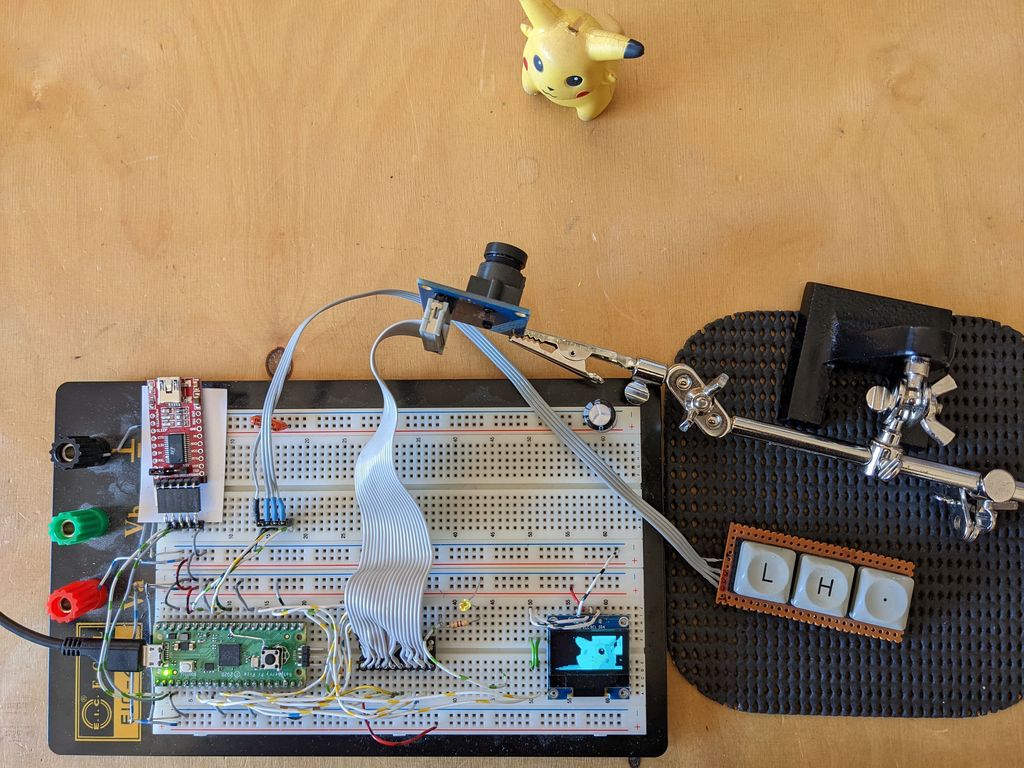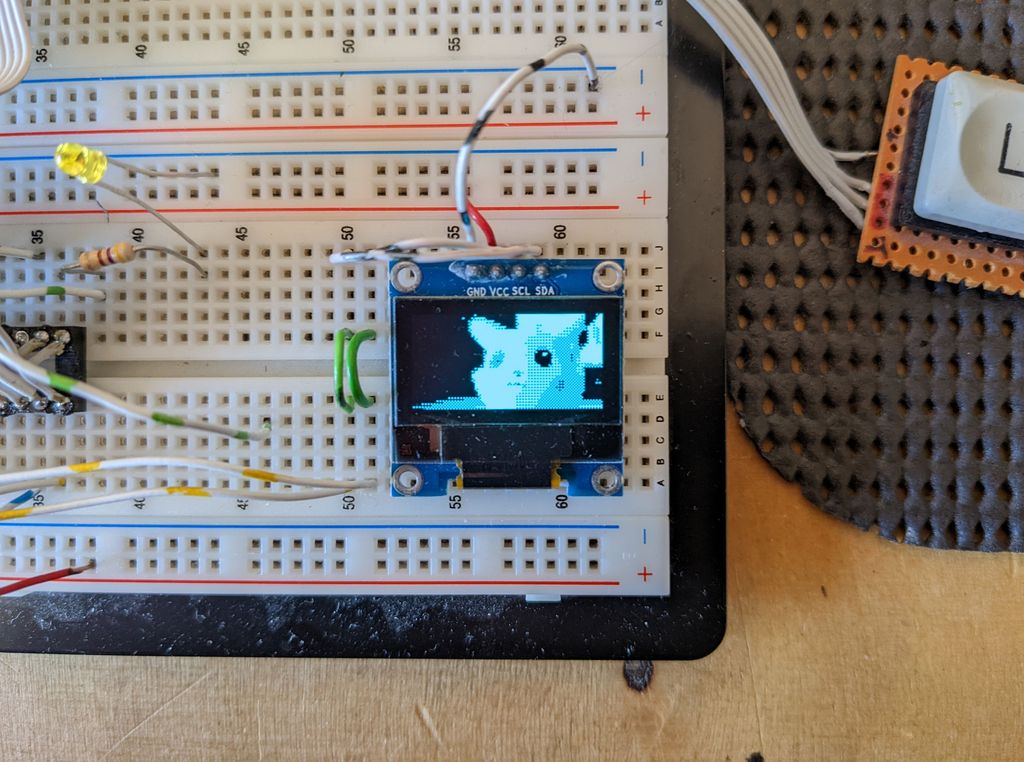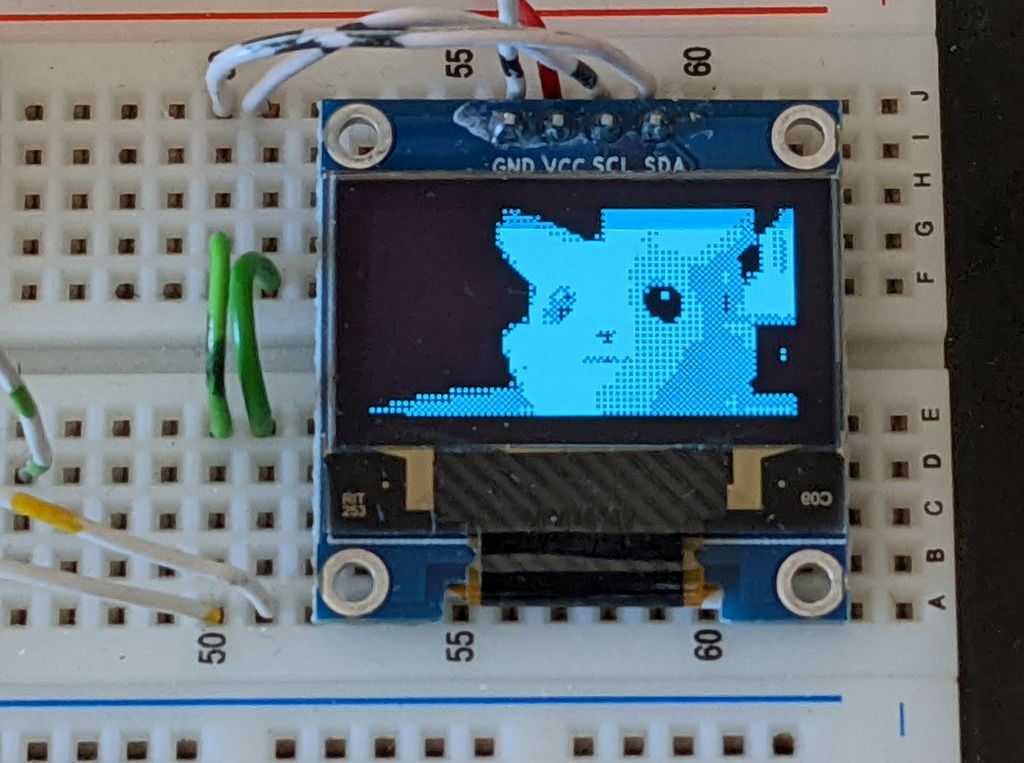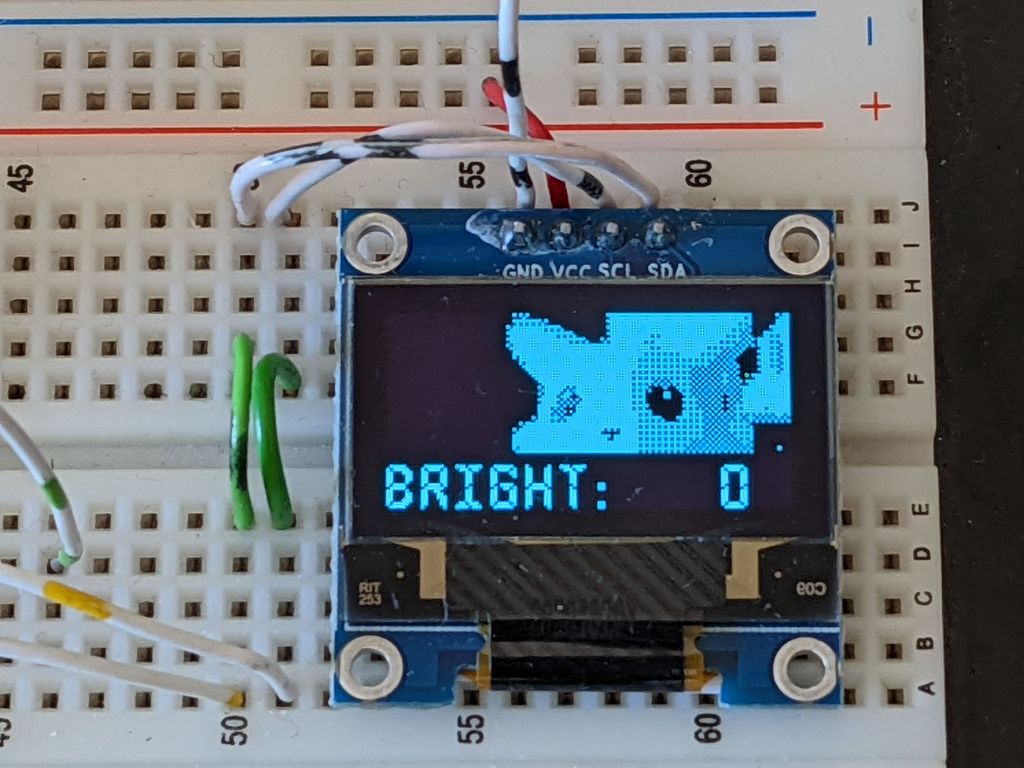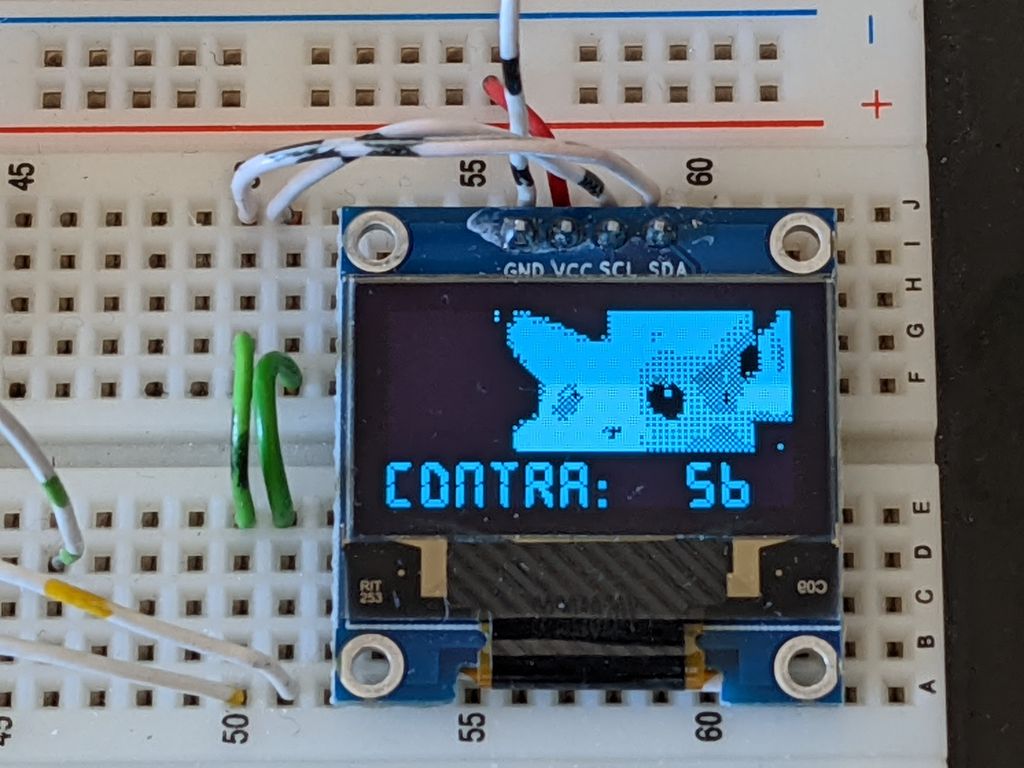Object -> Camera OV7725 -> Raspberry Pico RB2040 -> OLED-Display SSD1306 -> Viewer
Question: Does connecting a VGA camera to a 0.96" monochrome display make sense?
Answer: Not really! (But, some useful RP2040 routines are exhibited)
youTube video
https://youtu.be/NsE_c5HfDDw
slightly extended project with RGB OLED
https://github.com/qrti/picoCamRgb
- brightness, contrast
- halftone patterns D2x2 - D3x3 - 1x1 noise - C2x2 - C3x3
D = default polynomial distribution, C = custom linear distribution
- halftone black and white offset
only visible for custom halftone patterns C2x2 and C3x3
- night vision
- vertical-flip, horizontal-flip
- option show / next
- value minus / item previous
- value plus / item next
- camera OV7725 no fifo version (without RAM on PCB) is used for this project
- if the picture is distorted the camera might not have powered up properly
try Pico reset (RUN (pin 30) to GND) or power up again
- OLED display might stuck in I2C handshake on Pico reset, try power up again
- OLED I2C frequency is tuned from default 400 KHz to 2 MHz to make the display more fluent
if the display tends to stuck try to reduce I2CFREQ in oled.h
- halftone patterns 3x3 are wrapped from last to first row
- black/white halftone offsets for custom 2x2 and 3x3 are the same
- extreme black/white halftone offset values might produce strange display effects
- night vision might not switch off properly, reason unknown
- attached python scripts invoke the RP2040 assembler on .pio file changes when compiling
see platform.ini, pre_script.py and post_script.py
- quart is for simple debugging with printf on serial TX (pin 1) and RX (pin 2)
____ main ____
/ \ \
cam oled keys
/ \ | |
camCtrl camData text option
core 0
cam data -> PIO -> every 4th line -> DMA -> line buffer -> convert -> grey buffer
8 bit width 256 to 64 512x2 byte RGB565 128x64 byte
512x256 pix one line 64 lines
-> VSYNC IR -> reset line counter
-> HREF IR -> advance line counter, start DMA
-> 10 ms key polling routine for options
core 1
grey buffer -> halftone filter -> video buffer -> I2C -> OLED display
128x64 byte 2x2 - 3x3 - 1x1 noise | 128x64 bit 2 MHz 128x64 pix monochrome
|
option overlay ->
https://code.visualstudio.com/
https://platformio.org/
https://github.com/Wiz-IO/wizio-pico
qrt@qland.de 220222
